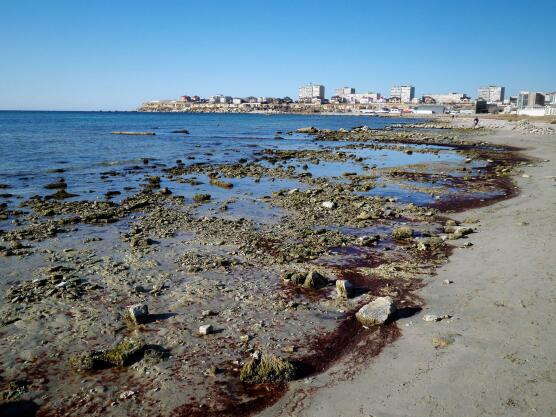Since 2006, the level of the world’s largest inland sea has been continuously declining. Kazakh authorities are increasingly taking this desiccation seriously.
Each morning, Sonia, a retiree in her sixties who prefers to remain anonymous, performs her exercise routine on the pedestrian promenade in Aktau, a port city in Kazakhstan, facing the Caspian Sea. “The retreat of the shoreline? Of course, everyone sees it!” she exclaims, pointing to rocks and wild plants below the promenade. “The water used to reach here,” she adds, referring to a point several meters from the current water level.
Further along the coast, small shells still cover the sand, far from the nearest saltwater waves. These shells are also a sign that the water was once present in this area, before it began to recede continuously since 2006. According to the Kazakhstan Institute of Hydrobiology and Ecology, the depth of this inland sea—almost the size of Norway (371,000 square kilometers), located between Europe and Asia—decreases by 25 centimeters annually. Overall, the depth of the Caspian Sea has decreased by 2 meters since 2000, and over eighteen years, it has shrunk by 22,000 square kilometers, with half of that area located in the Kazakh sector.
Source: Le Monde




